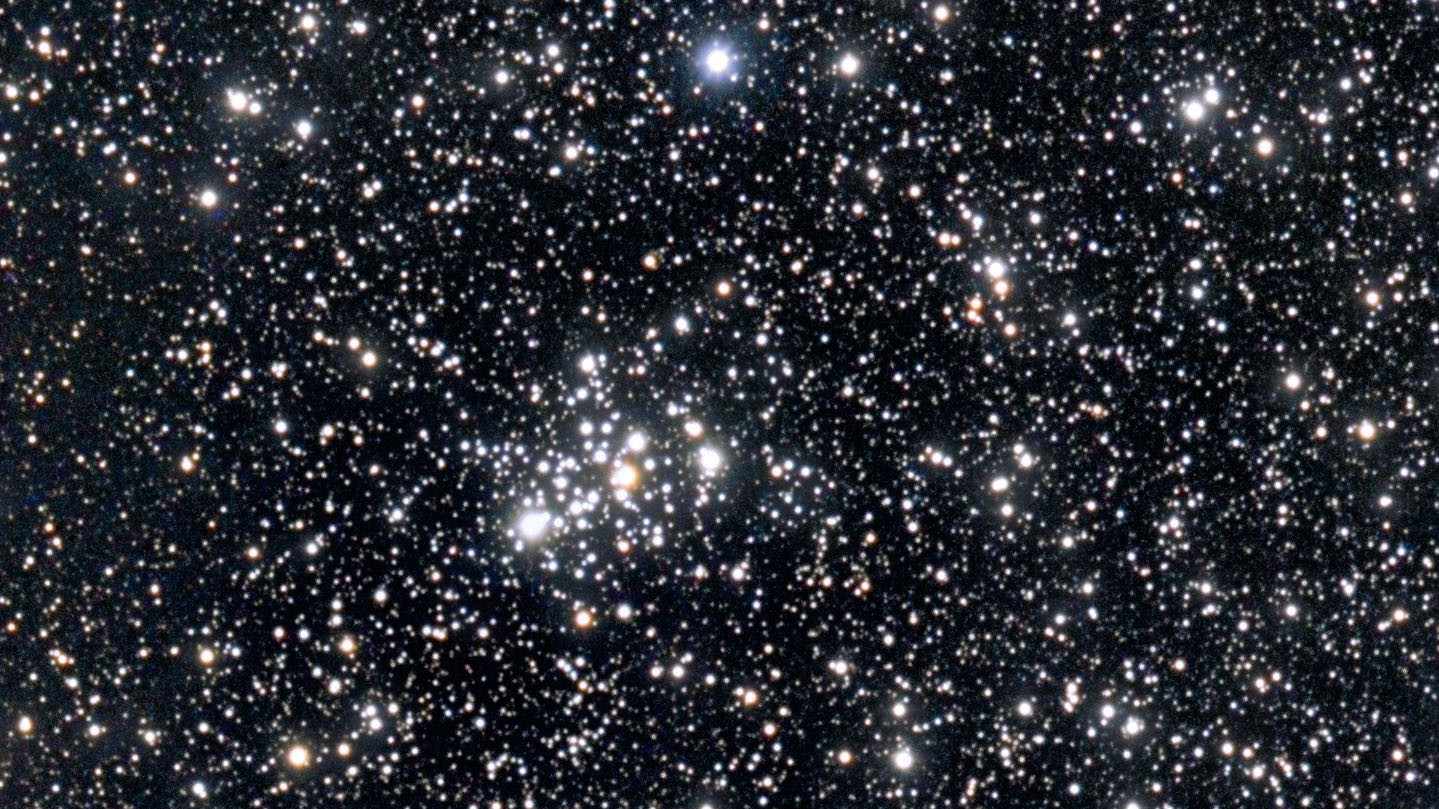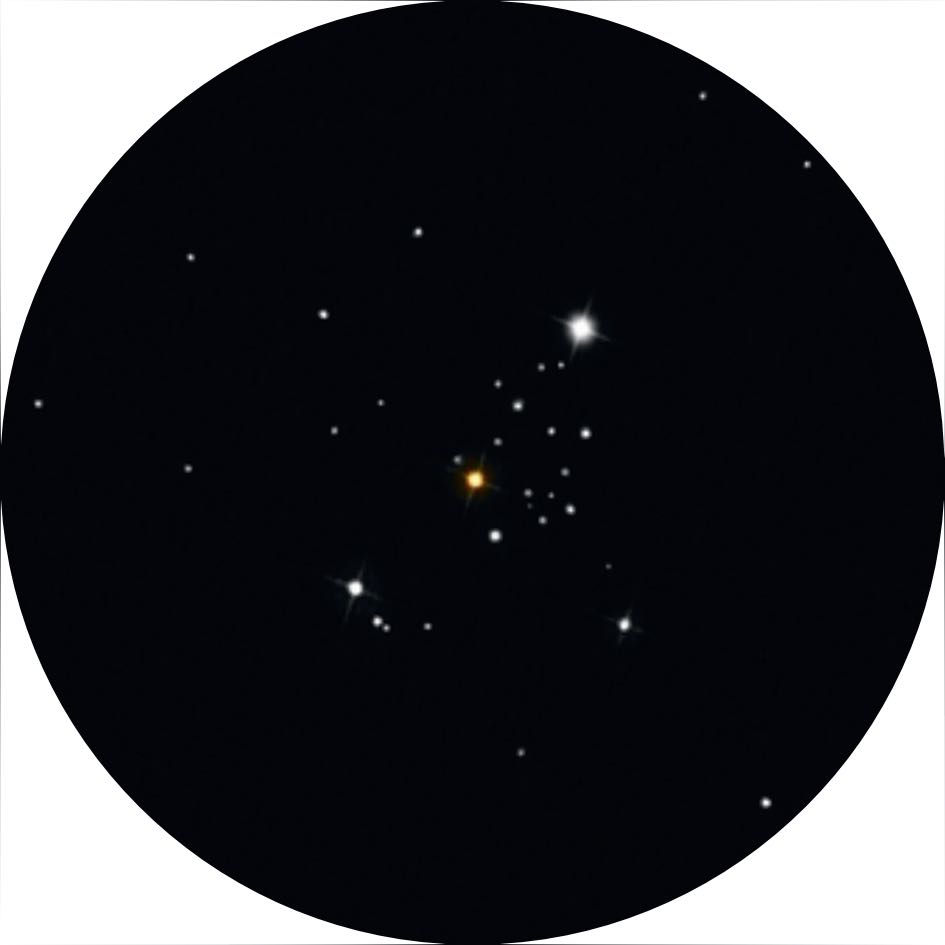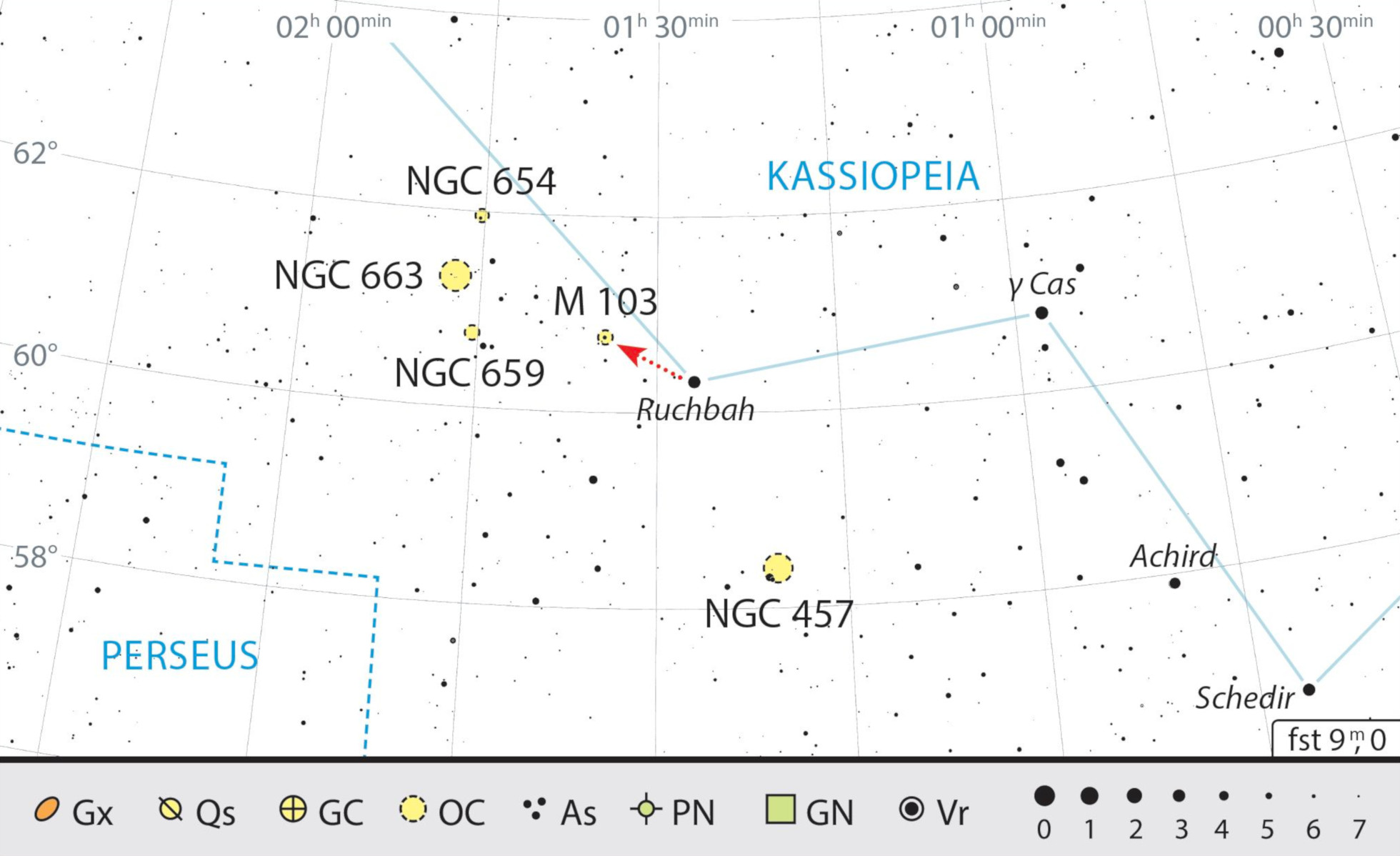Distant open cluster
Easy to find, and being close to the zenith undisturbed by the light pollution affecting objects closer to the horizon, M103 presents itself as an attractive chain of stars in the eyepiece.
 Open cluster M103 in the constellation of Cassiopeia. Peter Knappert
Open cluster M103 in the constellation of Cassiopeia. Peter KnappertM103, an open cluster in the constellation of Cassiopeia, was discovered by Pierre Mechain on 27 March 1781. It is located very close to Ruchbah or δ Cas in a section of the sky that is occupied by countless brilliant clusters. Why Messier, the French astronomer, chose to include this cluster is one of the many puzzles surrounding the Messier catalogue.
Nebulous speck close to Ruchbah
 Drawing of M103. Anne Ebeling
Drawing of M103. Anne EbelingNonetheless, this magnitude 7.4 cluster is ideal for city astronomers as a starting point for an autumn excursion to Cassiopeia. Close to the zenith, it is relatively undisturbed by light pollution, which makes observing it considerably easier - even from urban locations. Besides, the cluster is easy to find: if you centre your finder on Ruchbah, M103 will already be in the north-east of your field of view, visible as a faint nebulous speck.
Even with low 25× magnification, the fog disperses and turns into a chain of stars, whose northern and southern ends are marked by two bright stars which, in turn, have two further, somewhat fainter stars in their midst. The result is a really nice picture, which becomes even more attractive as you increase magnification.
Chain with binary star
At 78×, further small points of light appear around the chain, giving the cluster a triangular shape. A small challenge for the city astronomer is the bright star at the northern end of the star chain: this is binary star Struve 131 with two components of magnitude 6 and 10 that can be resolved if the seeing is good. At 13” apart, this shouldn’t be too difficult.
The cluster is said to be 17 light years across, and it is estimated to be 22 to 25 million years old. There are more than 170 stars in the cluster. At a distance of about 8,500 light years, M103 is one of the most distant clusters included in the Messier catalogue. It’s therefore about as far away as the famous Double Cluster in Perseus, which is worthwhile visiting for comparison. Once you’ve seen enough of M103, you should definitely continue your journey. You will find some very nice clusters, such as NGC 659, NGC 663, NGC 654 or NGC 457 in the immediate vicinity.
 M103 is easily found, close to star Ruchbah (δ CAS). J. Scholten
M103 is easily found, close to star Ruchbah (δ CAS). J. ScholtenAuthor: Karl-Peter Julius / Licence: Oculum-Verlag GmbH
